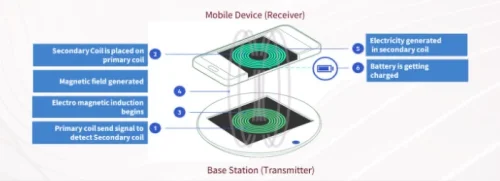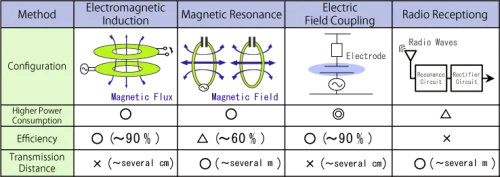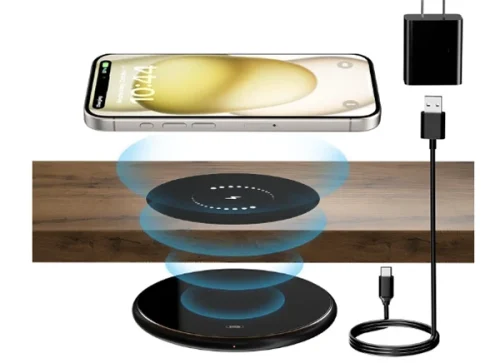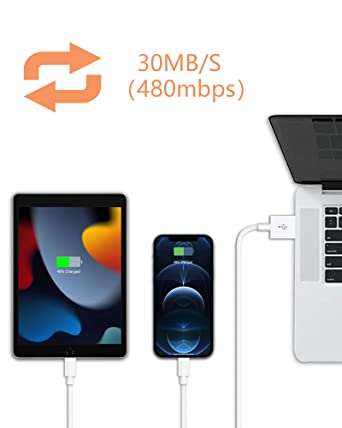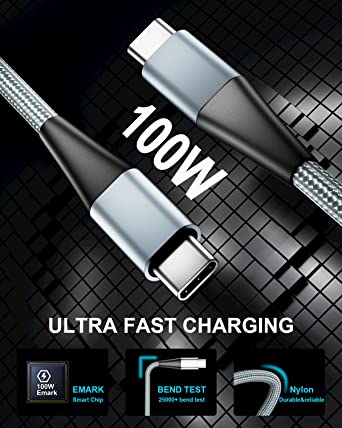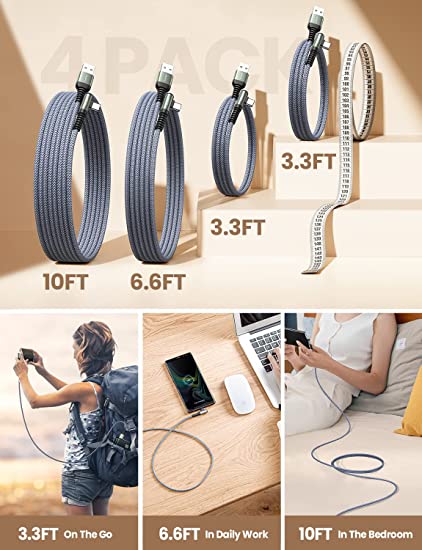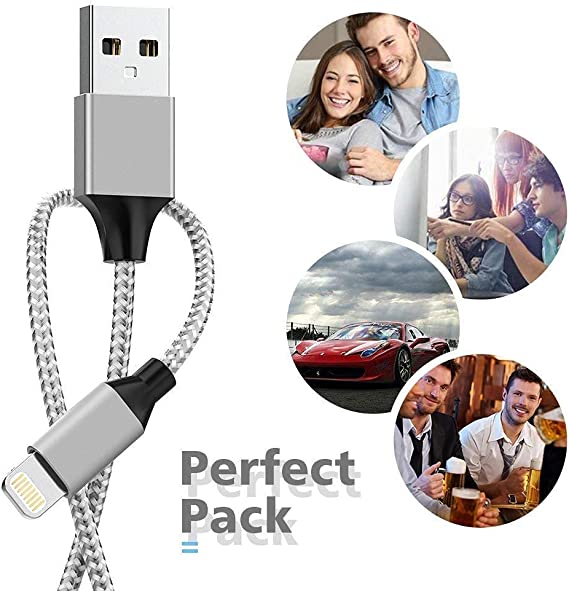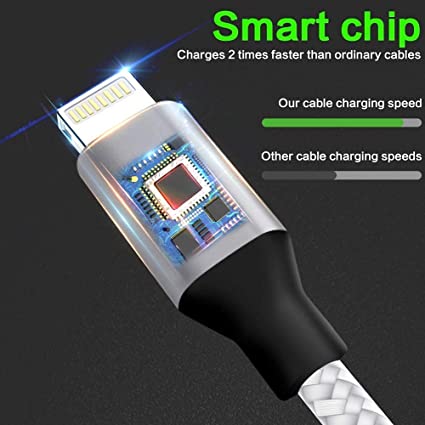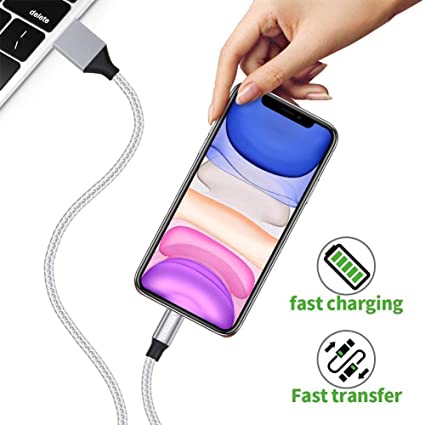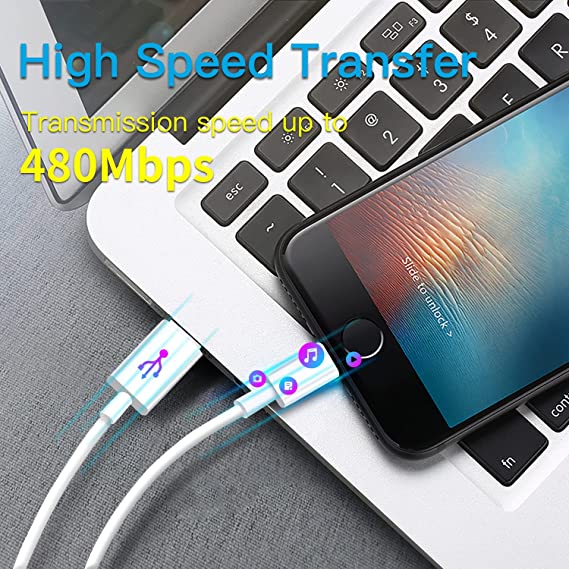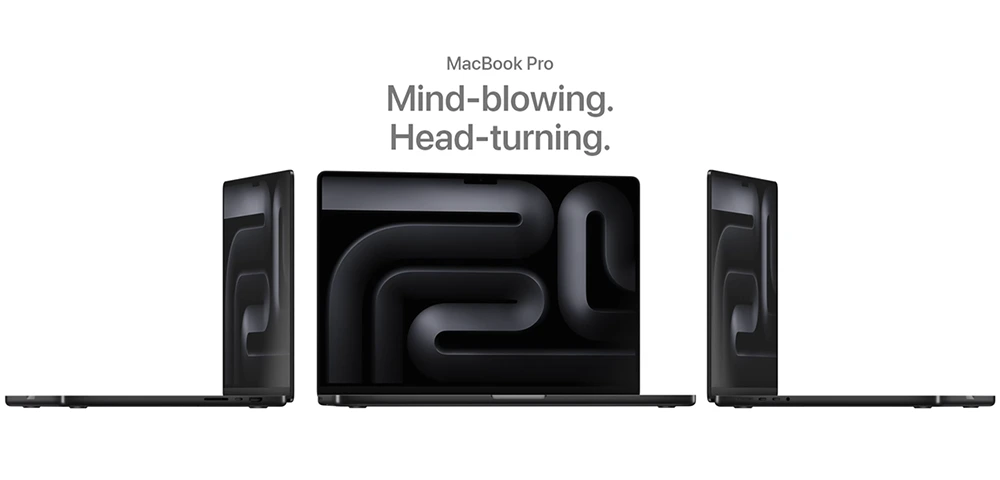Wireless Fast Charging Technology: How It Works and Benefits
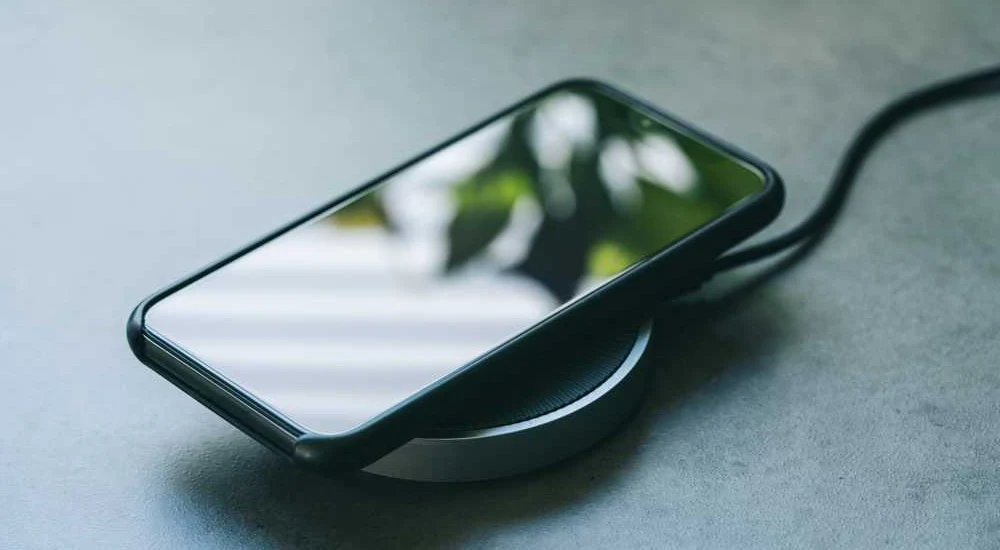
Welcome to the world of wireless fast charging technology!Inductive charging (also known as wireless charging or cordless charging) is a type of wireless power transfer. It uses electromagnetic induction to provide electricity to portable devices.
In this article, we will delve into the revolutionary advancements that have transformed the way we power our devices. From eliminating the hassle of cables to providing rapid charging capabilities, wireless fast charging has become increasingly popular. We will explore the principles behind this technology, its benefits, and how it works. Additionally, we will discuss the compatibility of fast charging wireless chargers with various devices and actually how fast is the wireless charging technology. Read on to find out the convenience and efficiency of wireless fast charging and how it is shaping the future of device charging.
What is Wireless Charging?
Wireless charging is a convenient method of powering devices without the need for data cables. It relies on inductive charging, where power is transferred through electromagnetic fields between a qi wireless charging pad or stand and a receiver in the device. The standard for wireless charging is Qi, developed by the Wireless Power Consortium (WPC).
It is a widely adopted wireless charging standard that enables wireless charging of various electronic devices, including smartphones, headphones, and wearable devices. Wireless charging technology not only facilitates wireless charging but also ensures security and interoperability among Qi-enabled devices. In simple terms, a Qi device refers to certified hardware that adheres to the Qi standard’s specifications for wireless battery charging. Any device that follows this standard can be considered a Qi device and can be charged using compatible wireless chargers.
Many smartphone manufacturers, including Samsung, Apple, and Huawei, have adopted Qi for their devices. While Qi has various power specifications, companies like Oppo, OnePlus, and Honor have developed proprietary technologies for faster wireless charging speeds. However, these higher speeds typically require specific charging stands and may not be widely supported by third-party manufacturers.
How Does Wireless Charging Work?
Instead of plugging your device into a charging cable, a special wireless charging pad transfers energy to your device using electromagnetic induction (also known as “inductive coupling”). It doesn’t replace Fast Charging with a cable — all phones that support wireless charging can still be charged the traditional way. Various wireless charging methods include:
Radio Charging:
- Commonly used for small devices with low power consumption, such as smartphones, wireless mice, keyboards, medical devices, smartwatches, and music players.
- The device’s receiver is tuned to the same frequency as the transmitter, enabling charging via radio waves.
Inductive Charging:
- Popular for charging medium-sized gadgets.
- Requires the device to be placed on a wireless or conductive charging pad, which is then connected to an electrical outlet.
Resonance Charging:
- Employed for high-power devices like computers, electric cars, vacuum cleaners, and robots.
- In resonance charging, the copper coil in the device is specifically tuned to match the electromagnetic intensity of the coil in the power source.
Mobile phone wireless charging operates through a magnetic loop antenna, typically a copper coil, generating an oscillating magnetic field. This field induces a current in one or multiple receiver antennas. Tuning these loops to resonate at the same frequency amplifies the induced current in the receivers, a concept known as resonant inductive charging or magnetic resonance. The prevailing wireless technologies largely hinge on an electromagnetic field between two copper coils, imposing a significant constraint on the proximity between a device and its charging pad. This specific charging method aligns with what Apple has integrated into the iPhone 8 and iPhone X models.
This method facilitates power transmission over greater distances between the transmitter and receiver, improving overall efficiency. Additionally, the size of the coil directly impacts the distance of power transfer; larger or multiple coils allow for extended charge distances. For instance, in smartphone wireless charging pads, small copper coils, typically a few inches in diameter, limit the efficient transmission distance.
So how does this relate to Phone wireless charging?
Long story short, The pad contains a wire coil which is hooked up to a power supply. As electrons flow through the wire, they create an electromagnetic field. Since mains power is alternating current, this field periodically reverses.
When a phone is placed on the charging pad, the coil inside the phone experiences the switching magnetic field, causing electrons in the phone’s coil to move back and forth. This movement is converted into direct current, subsequently charging the phone’s battery. That’s all.
Detailed Science Behind Wireless Charging.
There are two wireless charging standards to be aware of: the Qi standard and the PMA standard. While both standards utilize inductive charging, their key difference lies in the frequency or wavelength used.
- PMA Wireless Charging: PMA stands for Power Matters Alliance. This wireless charging standard operates within the 277-357 kHz frequency band.
- Qi Wireless Charging: Pronounced as “chee,” the Qi wireless charging method was developed by the Wireless Power Consortium (WPC). It is the more widely recognized and popular wireless charging standard among the two and is commonly incorporated into various wireless charging devices. Qi charging operates within the 100-205 kHz frequency band.
The process of wireless charging begins with a power transmitting pad or stand that is connected to a power outlet. The wireless charger pad qi or stand contains a coil that generates an alternating magnetic field when an electrical current passes through it.
On the receiving end, typically built into the device itself, there is another coil known as the receiver or magnetic plate. When the receiver comes into close proximity or within the specified range of the transmitter, the magnetic field generated by the transmitter induces an electrical current within the receiver’s coil.
This induced current is then converted into direct current (DC) by the device’s circuitry, which in turn charges the built-in battery. The charging efficiency and speed can vary depending on factors such as the distance between the transmitter and receiver, alignment, and the power output of the charging pad or stand.
Qi wireless charging has different power specifications. The most commonly encountered is low power, which is typically used for mobile devices. The minimum power output for this specification is 5 watts (W), but some devices support higher power levels such as 7.5W, 10W, and even up to 15W. In later Qi version standards, power outputs of up to 30W have been introduced.
However, certain companies have developed proprietary technologies to achieve even super fast wireless charging speeds. For example, Oppo and OnePlus offer wireless charging speeds of up to 50W, while Honor has pushed the boundaries with the Honor Magic 4 Pro supporting 100W wireless charging. These higher speeds often require the use of specific charging stands or mats and may not be widely supported by third-party manufacturers.
Wireless charging offers a convenient and clutter-free charging experience. With the widespread adoption of the Qi standard and advancements in technology, wireless charging has become increasingly popular, providing users with a convenient way to keep their devices powered up without the hassle of cables.
Is My Phone Qi Wireless Charging Compatible?
- If you see the Qi logo, then your phone is Qi-enabled and will work with a Qi wireless charger. For Android users, the process is a bit more complicated. Some Android phones come with built-in Qi wireless charging, while others require you to purchase a Qi-compatible case or receiver to enable wireless charging.
- Also, Check your phone’s user manual, especially the “battery” part. If “wireless charging” is mentioned or has instructions on how to use Qi charging, then your phone supports it. You can also visit the website of your phone manufacturer and check the specifications of the phone in detail.
- Check the Phone’s settings: Open your phone’s settings and look for a wireless charging option. If you find this setting, it means that your phone supports qi certified wireless charging. Moreover, check if it has the necessary antennas built into the battery to receive power from a wireless charger.
| Brand | Apple iPhone | Samsung Galaxy | Huawei | Google Pixel | OnePlus |
|---|---|---|---|---|---|
| model | 8; SE 2020; 8 Plus; 12; X; 12 Mini; XR; 12 Pro; XS; 12 Pro Max; XS Ma; 13; 11; 13 Mini; 11 Pro; 13 Pro; 11 Pro Max; 13 Pro Max; 14 Pro; 15Pro; | S7; Note 10+ 5G; S8; Note 20; S8+; Note 20 Ultra; S9; S20; S10; S20 Ultra; S10e; S21; S10 Plus; S21 Ultra; S10 5G; S21+; Note 8; S22; Note 9; S22 Ultra; Note 10 ; S22+; Note 10+; | Mate 20 Pro; P30 Pro; P40 Pro; P40 Pro+; | 3; 3 XL; 4; 4 XL; 5; 6; | 8 Pro; 9; 9 Pro; |
How Fast is Wireless Charging?
Qi wireless charging standard has evolved significantly since its debut in 2010 when it offered a modest 5W of wireless charging power. Today, the standard has progressed to provide up to 15W of wireless charging capability, although the actual charging speed depends on the specific device being used.
Typically, wireless chargers have a maximum output of 15 watts, which results in slower charging compared to wired methods. It usually takes about 3-4 hours to charge a smartphone from 0 to 100% using a basic wireless charger with a power rating of 10 to 15 watts.
However, the Qi wireless charging standard, being the most widely adopted, has introduced a higher threshold of 30 watts. This advancement allows smartphones to charge from 0 to 50% in approximately 30 minutes, marking a significant improvement in Qi wireless charging capabilities. Moreover, certain phone manufacturers, such as OnePlus, have introduced high-wattage wireless chargers to further enhance the charging speed.
Despite being slower compared to wired charging options, wireless charging is gaining popularity and is expected to continue growing as charging speeds improve over time. Wireless charging pads are already being integrated into new cars, and there is an anticipation that they will become more prevalent in furniture and public spaces such as bars and cafes. In addition, companies like Samsung and Huawei are exploring the concept of reverse wireless charging, where phones themselves can wirelessly supply power to other devices. Although this feature is currently inefficient, advancements in technology may enhance its capabilities in the future.
Wireless fast charging technology has revolutionized the way we power our devices. With the convenience of cable-free charging, users can simply place their devices on a charging pad or stand and enjoy a rapid charging experience. The evolution of wireless charging standards, such as wireless charger qi standard, has enabled higher power outputs, allowing for faster charging speeds.
Discover the world of fast charging with APPHONE, your reliable wall/car charger manufacturer. Our UL, CE, FCC, and RoHS-certified products offer high efficiency and safety. From USB C PD wall chargers to QC 3.0 USB A car chargers, we cater to your diverse needs. Experience lightweight and efficient charging with our multi-port 65Gan charger adapter. Whether at home, in the office, or on the road, trust APPHONE for fast and stable charging. Contact us today to explore our customizable fast charger solutions for a smarter charging experience.
Does wireless charging work with a case?
Yes, generally, wireless charging definitely works with phone cases, but if your case is too thick, it will not charge your phone properly. Most phone cases available today are designed to be compatible with wireless charging technology. If you are looking for a phone case for your wireless charging, avoid buying thick cases.
What is the working principle of wireless charger?
A fast changing magnetic field interacts with the copper coil present inside the smartphone when you put a compatible smartphone on a wireless charger The magnetic field then produces electric energy in an enclosed loop that interacts with that magnetic field using electromagnetic induction.
What makes a wireless charger fast?
The speed of a wireless charger is determined by various factors. One crucial factor is the power output of the charger. Higher wattage wireless chargers can deliver more power to the device, resulting in faster charging times.
After fast charging technology applies the Qi standard, fast chargers can put out anywhere from 10 to 65 watts. (although, technically speaking, anything over 2.5 watts is considered fast wireless charging)
How Long Should Wireless Charging Take?
Wireless charging pads take about two to three hours to charge an iPhone, but can charge some Android devices in 60 minutes or less. Nevertheless, the charging time can vary based on factors such as the battery capacity, the wattage of the wireless charger being used, the distance between the charging pad and the device, and other variables. It’s worth noting that newer devices often support faster charging speeds compared to older models.
Does fast wireless charging damage the battery?
Wireless charging doesn’t damage your phone battery. Modern smartphones are equipped with sophisticated charging circuitry that regulates the charging process and protects the battery from overcharging or overheating. Fast wireless charging technologies, such as Qualcomm Quick Charge or Samsung Adaptive Fast Charging, are designed to deliver higher power levels to charge your phone more quickly. While fast charging may generate slightly more heat during the charging process, it is within safe limits and should not cause significant harm to the battery. However, it’s worth noting that charging the wireless battery at a slower rate may help prolong its overall lifespan.
Should I Avoid Wireless Charging?
The decision of whether to use wireless charging or not is subjective and depends on individual preferences and needs. If you are someone who values faster charging times and is constantly on the go, wireless charging may not be the ideal option for you. However, wireless charging can be convenient in situations where you don’t have access to a wall charger or when you need to charge multiple devices simultaneously to save time. If your phone supports wireless charging and you are willing to invest in fast wireless chargers, it may be worth giving it a try to see if it aligns with your charging needs and lifestyle.
What is the technology behind wireless charging?
Wireless charging technology uses the principle of electromagnetic induction. Uses electromagnetic fields to transmit power from a charging pad or base station to compatible devices. The process involves two main components: the transmitter (charging pad) and the receiver (device being charged). The transmitter generates an alternating current through a coil, creating an electromagnetic field. When the receiver coil in the device comes into proximity with the transmitter, it induces a current in the receiving coil, converting the electromagnetic energy back into electrical energy to charge the device’s battery.
How do I know if my wireless charger is Qi certified?
Products that have been certified to meet the Qi standard for safety and interoperability are issued a certified ID number and are included in the Wireless Power Consortium Product Database. The best way to ensure that a product is certified is to check to see if it’s in this database.
Does wireless charging reduce battery life?
Put simply, Wireless Chargers Will Not Hurt Your Phone Battery Life. Just don’t run around plopping your smartphone down on the charging pad whenever the battery drops a few percentage points, as constant charging will damage your smartphone battery.
Share This Artcle:

Fast delivery
Fastest delivery within 22 days

Quick proofing
Fastest 3-day proofing cycle

After-sale protection
24-month long warranty

1V1Customer Service
Professional customer service follow-up

